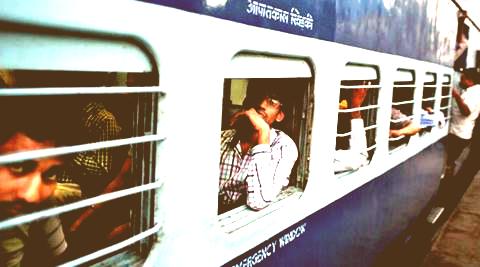The Indian Railways have always been susceptible to frequent derailments and accidents for several years now. But it seems now that the railways are finally headed on the right track. Under Piyush Goyal, the railways have managed to achieve the best safety record till date. In fact, it is for the first time that the number of rail accidents have reduced to a two-digit figure, to just seventy-three rail accidents. As of March 30th, the number of rail accidents was recorded at seventy-three, a momentous decline of 29 percent from one hundred four in 2016-17.
The Indian Railways has always had a miserable record in terms of accidents. It was in 1968-69 that for the first the time, the number of rail accidents fell to three digits. Ever since, three digits has been the norm. The exception was 1980-81, when it went up to four digits, a total of 1,013 accidents.
There has been a decline in the total number of derailments, which have come down to thirty-nine from sixty-eight at the same time last year. The number of accidents at unmanned crossings has also come down to eight as opposed to fifteen at the same time last year. This is suggestive of a massive improvement in railway safety on all counts.
Chairman of the Railway Board, Ashwani Lohani, has shed some light on what made this unimaginable feat possible. According to him, the railways have laid immense focus on improving safety everywhere, and there is also a voluntary reporting system in place now, which empowers every railway employee to report safety lapses anonymously from anywhere in India. This activism on the part of the authorities has led to a sharp reduction in the number of rail accidents and derailments. The railway minister Piyush Goyal and the Railway Board led by Ashwani Lohani, have proceeded with great caution and initiated several necessary safety-upgradation works. The railways have treated safety as the topmost priority, sometimes even at the cost of temporarily affecting operations in several areas, like speed restrictions.
The railways seem to be moving ahead by leaps and bounds. It is the same railways which were seen as an ‘unsafe’ mode of travel by many a few years ago, due to frequent derailments and other accidents. Speed and comfort are also important, but it seems that under Piyush Goyal, the focus has been as much on safety as the other factors. Rightlog.in had shared a story just last week about how the ministry would soon introduce the Online Monitoring of Rolling Stock (OMRS) technology, a technology comprising of microphones and sensors recording the noises generated by the coaches and locomotives when they are in motion on the tracks, and reporting back any abnormality to a control room. Earlier, the Railway Ministry had approved the installation of Centre Buffer Coupling (CBC), equipment that ensures coaches do not climb on top of each other in case of an unfortunate accident. Clearly, the bull has been taken by the horns, and the results are showing already.


































